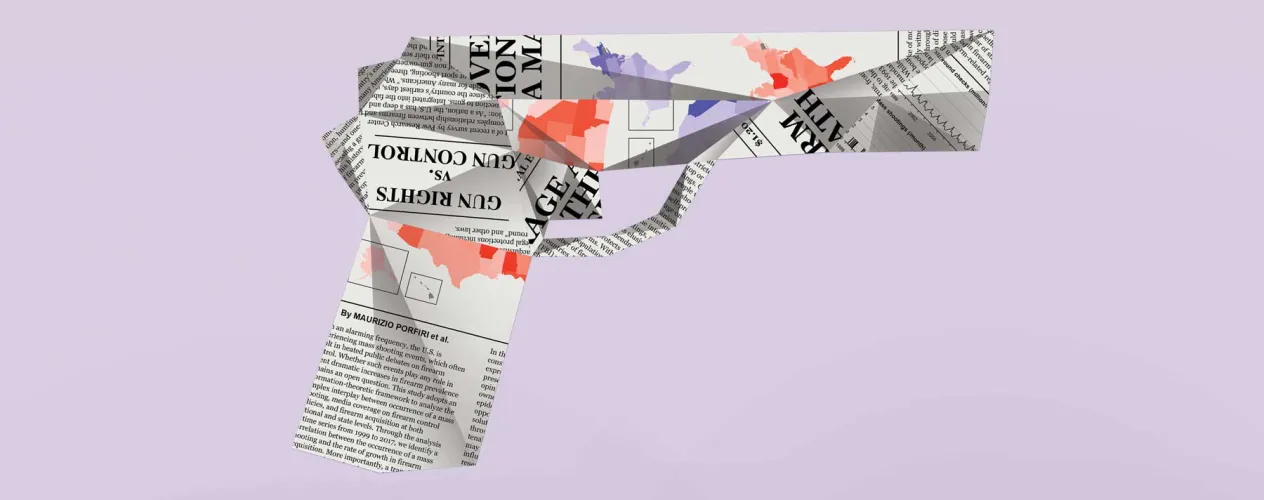Unintended Consequences
When news outlets mention gun control in the context of reporting about mass shootings, gun sales rise.

WHAT WAS LEARNED
Print-media coverage of U.S. gun control policy in the wake of mass shooting events has resulted in increases in firearm acquisition, particularly in the states with the least restrictive gun laws.
HOW DO WE KNOW?
A research team that included James Macinko, a professor of health policy and management and community health sciences at the Fielding School, along with colleagues at the NYU Tandon School of Engineering and Northeastern University, used a data-driven approach capable of going beyond mere correlations to reveal causal relationships. Theirs was the first study to quantify the influence of news-media stories on firearm prevalence. The researchers analyzed 69 mass shootings in the U.S. between 1999 and 2017, gathering data on the number of firearm background checks per month (a proxy measure for gun purchases), along with all print news coverage of firearm control policies appearing in the New York Times and Washington Post during the same period. Their findings of a causal link between the coverage and firearm sales were published in the journal Nature Human Behaviour.
WHAT IT MEANS
“Our study suggests that many people may purchase firearms not out of fear for their safety, but out of fear of new regulations,” Macinko says. “There is a clear need for dialogue around how mass shooting events are discussed by the press, in order to find ways to mitigate unintended consequences.”
Faculty Referenced by this Article

Professor of Community Health Sciences & Health Policy and Management, and Associate Dean for Research